Blog
Using Kanban for Personal Growth and Self-Improvement Goals in the New Year19 Dec 2024

As we approach 2025, the idea of setting personal growth and self-improvement goals is both inspiring and overwhelming. Too often, ambitious resolutions lose momentum because, while the vision is grand, the execution plan lacks structure. This is where the simple yet powerful Kanban method can transform how you approach goal setting, providing clarity, motivation, and a tangible way to measure progress.
First applied as a method for streamlining workflows in manufacturing and later adopted for team-based project management, Kanban has also proven to be effective in personal productivity. By visualizing each task and its progress, breaking large goals into smaller, actionable steps, and celebrating achievements as you move cards to the "Done" column, Kanban offers a straightforward yet powerful framework for self-improvement. Here’s how you can use a personal online Kanban board—complete with due date tracking, reminders, calendar mode, and recurring tasks—to make your goals achievable and sustainable in the new year.
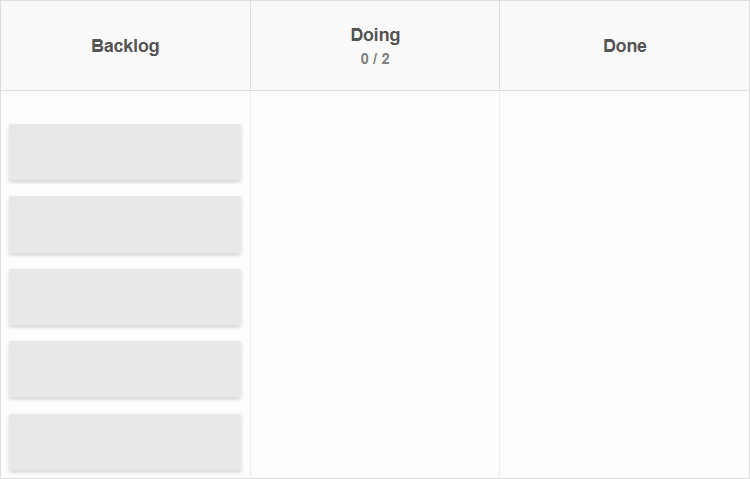
Visualize your goals and progress
The essence of Kanban lies in illustrating to-dos. When applied to personal growth, a digital Kanban board allows you to see your goals more clearly, estimate their size, track progress, and identify and resolve bottlenecks. By categorizing tasks into columns like “To Do”, “In Progress”, and “Done”, you’ll experience the satisfying visual representation of progress as you move tasks from one stage to the next. This is especially helpful for tracking internal development goals that don't have a physical form—such as become more assertive.
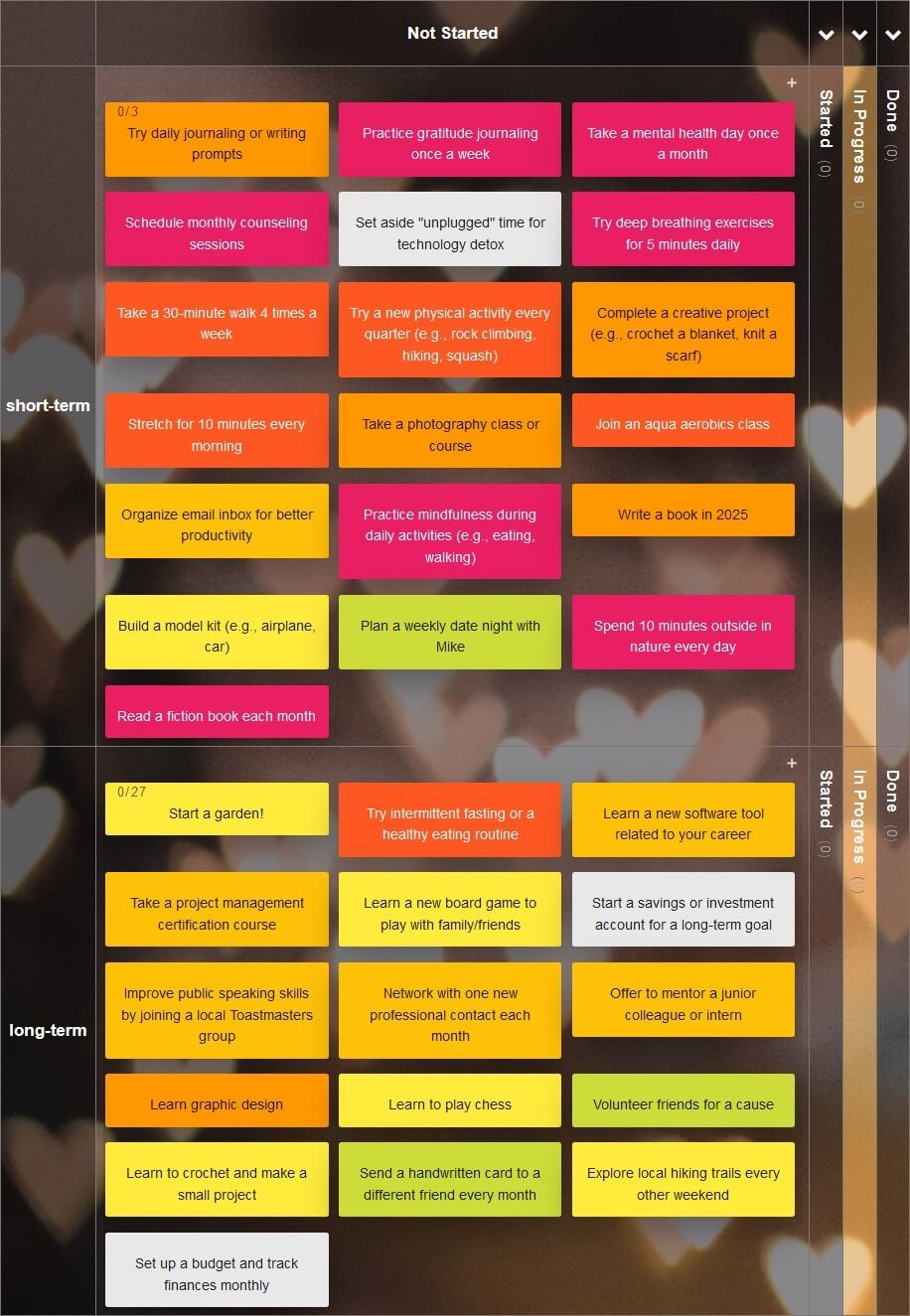
How to implement it?
- Start with a board that reflects your goals for the year.
- Break down large goals into smaller, specific tasks. For example, instead of writing “Improve health”, create tasks like “Take a brisk 30-minute walk three times a week”, “Cook a healthy meal each Sunday and Wednesday”, or “Sign up for water aerobics”.
- Move cards to the “Done” column as you complete them. Watching your "Done" column grow will be rewarding and keep you motivated.
This visualization not only reduces feelings of overwhelm but also serves as a consistent reminder and tracker of your priorities.
Divide ambitious goals into manageable tasks
A big reason we abandon our aspirations is because they seem too vast or abstract. Kanban helps break those lofty resolutions into actionable, bite-sized tasks that are easy to focus on and make incremental progress. For example:
- Major Goal: Write a book in 2025.
- Actionable Steps:
- Define topic (Due by Jan 15th)
- Make a chapter list (Due by Jan 31st)
- Draft chapter 1 (Due by Feb 28th)
- Edit chapters 1-3 (Due by March 30th)
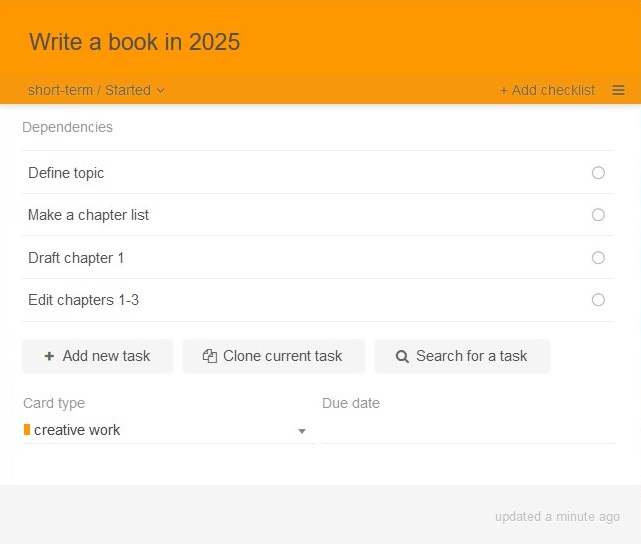
Each task gets its own card, with a due date, checklist, and date-specific reminders. Breaking down goals into smaller tasks makes them feel more achievable and provides consistent wins that propel you forward.
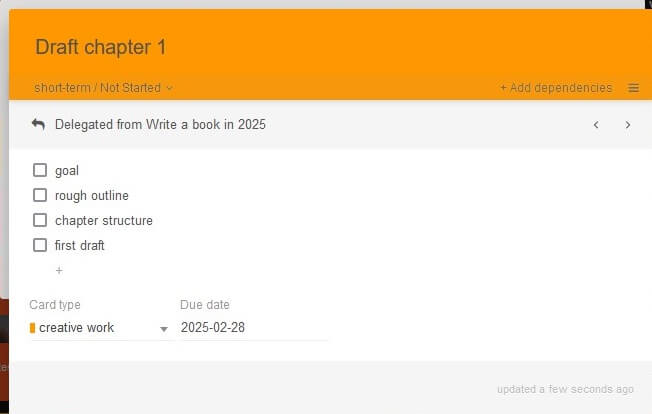
Leverage deadlines to maintain momentum
Without strict deadlines and accountability, even the best plans can fall apart. Use automatic due date tracking and reminders to keep yourself accountable to your personal growth plan.
Benefits of using tasks with due dates and reminders:
- They act as gentle nudges to ensure you don’t forget or procrastinate on tasks.
- You can set micro-deadlines for smaller steps, making progress feel attainable.
- Automatic reminders prompt you to revisit goals or check-ins, so nothing falls through the cracks.
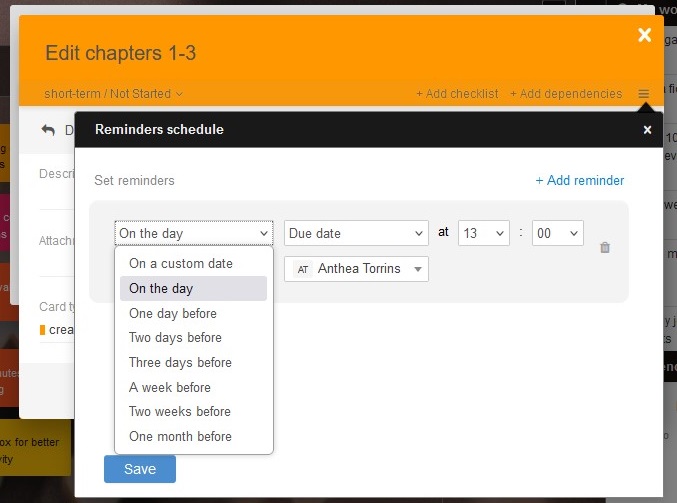
Leaving the responsibility of date tracking and reminders to a digital Kanban board frees up mental space, letting you focus on working toward your goals without worrying about pending tasks.
Embrace calendar mode for a time-based view
A Kanban view excels at organizing goals by their completion status, while a calendar view is especially useful for long-term, large-scale objectives. For personal growth, a calendar perspective of your Kanban board is advantageous, as it helps balance multiple priorities and optimize your time.
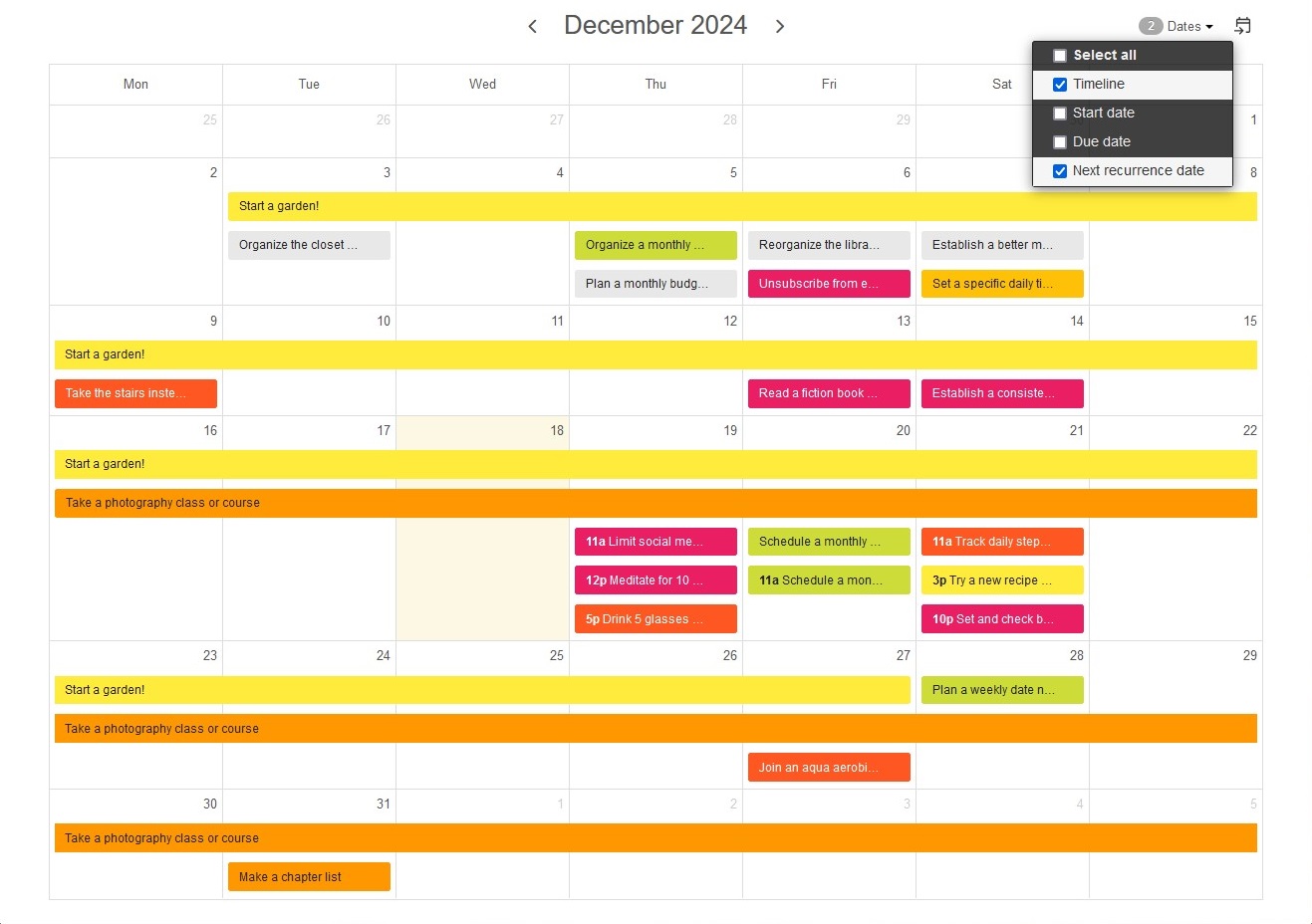
How the calendar view can help:
- Map out recurring habits or commitments (e.g., weekly gym visits, meditation sessions).
- Plan out deadlines for larger milestones to ensure steady progress over time.
- Spot gaps or areas where you can optimize your time.
Seeing your tasks on a timeline offers clarity, helps prevent overscheduling, and ensures your goals align with your broader life commitments.
Recurring tasks for continuous check-ins
Self-improvement requires consistency, and recurring tasks help with that. Whether it's a weekly progress review, daily habits like stretching, or journaling to reflect on growth, recurring tasks keep you on track. With recurring tasks, you don’t have to manually copy tasks, and you ensure that these regular check-ins or habits become part of your routine.
Examples of recurring tasks for personal growth:
- Review weekly progress every Sunday.
- Spend 30 minutes learning a new skill daily.
- Reflect on accomplishments and setbacks at the end of each month.
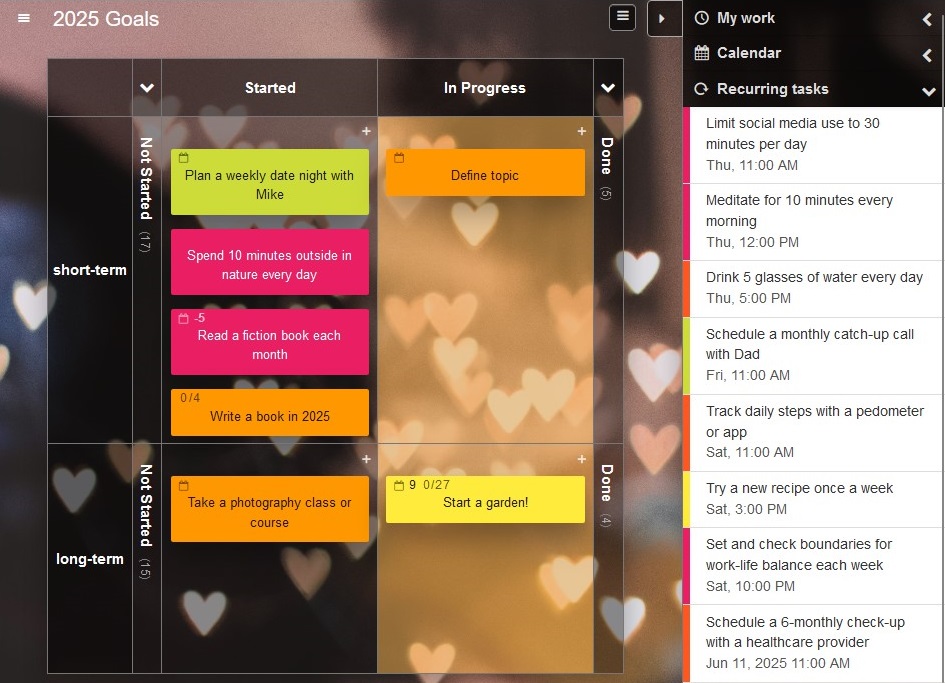
Celebrate success: The pleasure of dragging cards to “Done”
Few things are as satisfying as completing a task and moving its corresponding card to the “Done” column. This small act creates a sense of accomplishment, reinforces your progress, and motivates you to keep going.
Why this matters:
- Small wins add up and make long-term goals feel achievable.
- Completing tasks in a tangible way boosts motivation, confidence, and positive momentum.
- It serves as a visible record of your growth throughout the year.
Take time to acknowledge each milestone, no matter how small. Over time, your growing “Done“ column will become a testament to your commitment, consistency, and success.
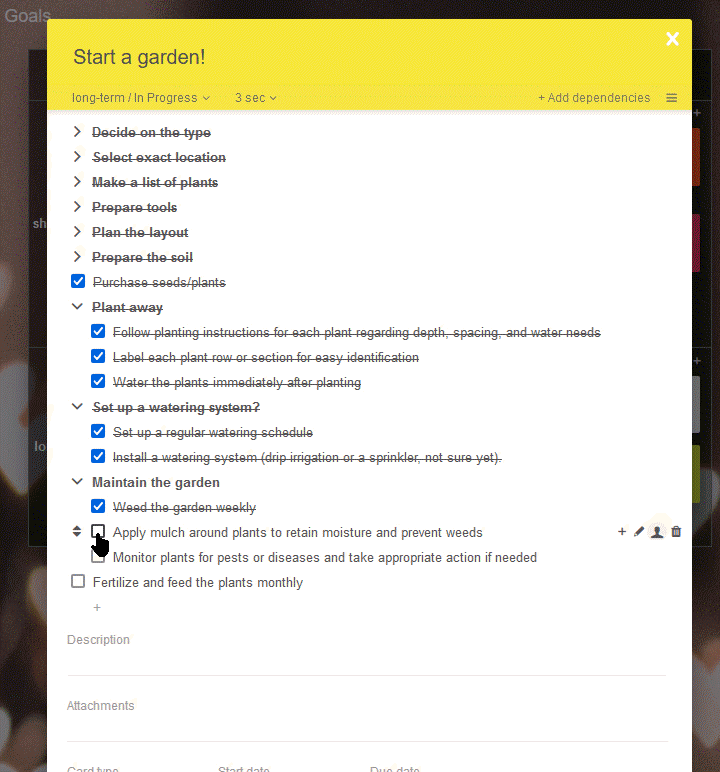
Bringing it all together
Kanban isn’t just a productivity tool for teams—it’s a mindset that can revolutionize how you approach self-improvement and personal growth. It creates a structured system that keeps you focused and accountable.
As you enter the new year, imagine the satisfaction of watching your progress unfold: tasks moving from "To do" to "Done", small wins building toward larger accomplishments, and a clear sense of momentum driving you forward. With a web-based Kanban tool at your side, your personal growth goals are no longer distant aspirations—they are tangible steps you take, one card at a time, toward reaching your full potential.
So, set up your board, start small, and celebrate every card you move. The journey to self-improvement has never been so clear, achievable, and fulfilling.
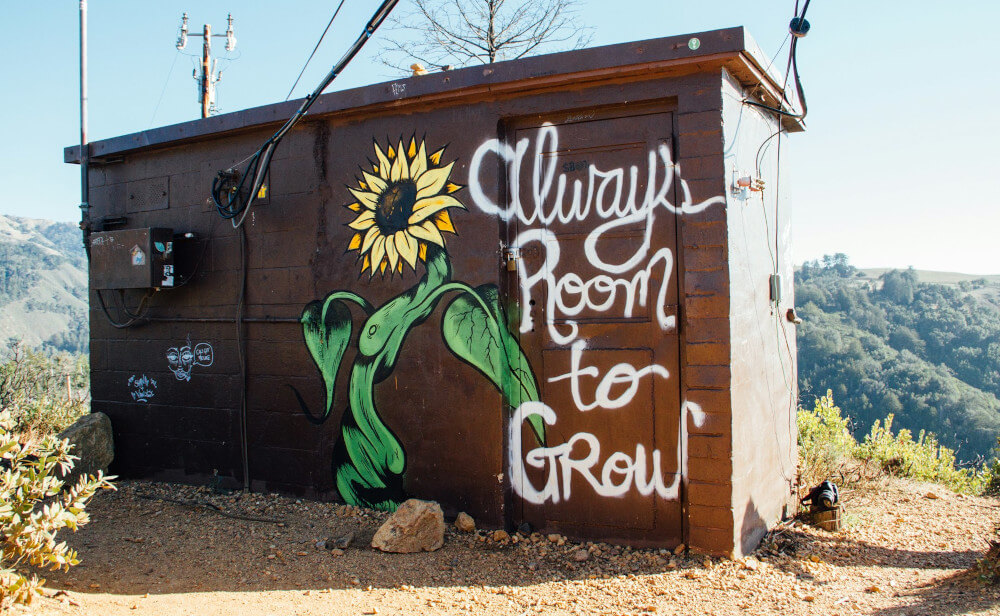
Sign up for a 14-day free trial
to test all the features.
Sign up now and see how we can help
your organization deliver exceptional results.